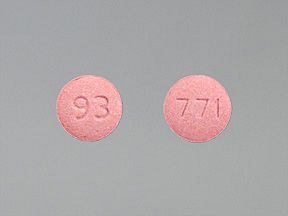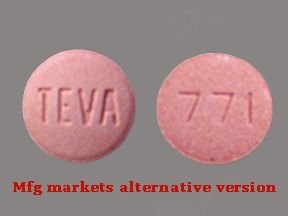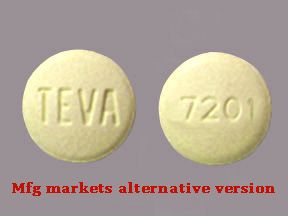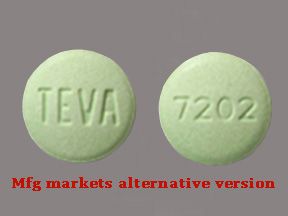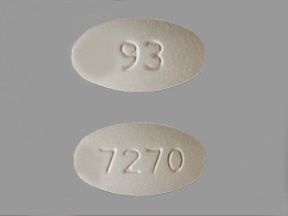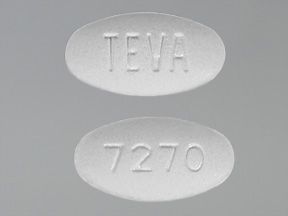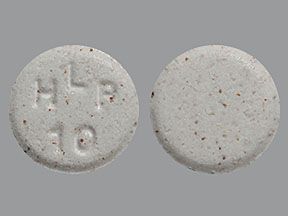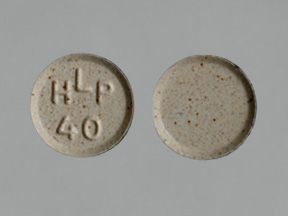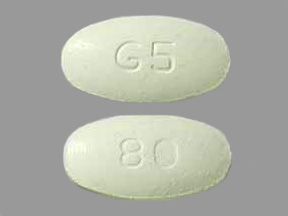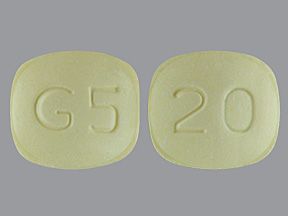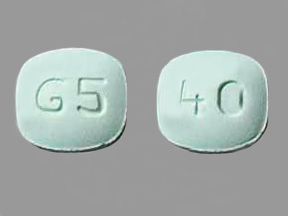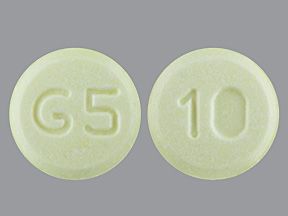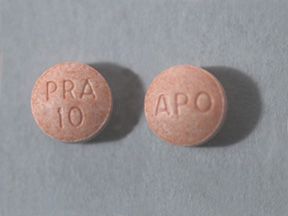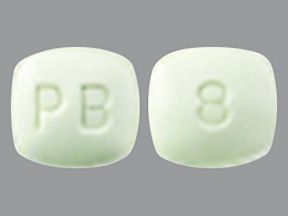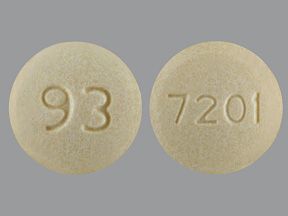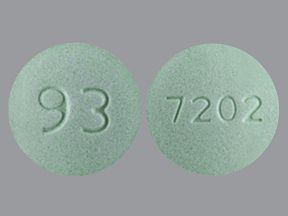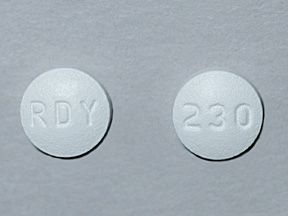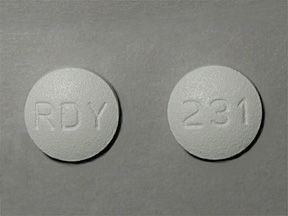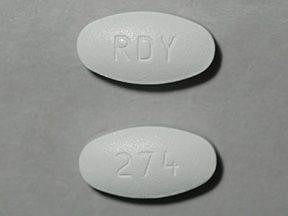Highlights for pravastatin
- Pravastatin oral tablet is only available as a generic drug. It doesn’t have a brand-name version.
- Pravastatin comes only as a tablet you take by mouth.
- Pravastatin is a drug called a statin. It’s used to lower LDL (bad) cholesterol and triglycerides in your blood, and increase HDL (good) cholesterol.
- Muscle problems warning: This drug can cause muscle damage. This can be in the form of myopathy (muscle pain) or a very serious condition called rhabdomyolysis (muscle breakdown). Your risk of these problems is greater if you’re over the age of 65 years, if you have hypothyroidism (an underactive thyroid), or if you have kidney disease. Tell your doctor right away if you have unexplained muscle soreness, pain, or weakness while taking this drug.
- Liver problems warning: Lab tests of your liver function may be abnormally high while taking this drug. Your doctor will monitor this while you take this drug.
Pravastatin is a prescription drug. It comes as a tablet you take by mouth.
Pravastatin oral tablet is only available as a generic drug. Generic drugs usually cost less than the brand-name version. In some cases, they may not be available in every strength or form as the brand-name drug.
Pravastatin oral tablet may be used as part of a combination therapy. This means you may need to take it with other medications. These may include bile acid resins or other cholesterol-lowering medications.
Why it’s used
Pravastatin is used to:
- lower LDL (bad) cholesterol and triglyceride levels in adults and some children, in certain situations
- increase HDL (good) cholesterol levels in adults and some children, in certain situations
- lower the chance of heart attack and stroke in adults
- slow the progression of heart disease
By improving cholesterol levels, this drug can help slow the development of heart disease. It can also reduce the risk of a heart attack or stroke. This drug should be used in combination with a healthy diet, weight loss, and exercise.
How it works
Pravastatin belongs to a class of drugs called HMG-CoA reductase inhibitors. These are also called statins. A class of drugs is a group of medications that work in a similar way. These drugs are often used to treat similar conditions.
Statins block an enzyme known as HMG Co-A reductase to help lower cholesterol levels.
Pravastatin oral tablet doesn’t cause drowsiness, but it can cause other side effects.
More common side effects
The more common side effects that can occur with use of pravastatin include:
- muscle pain
- nausea
- vomiting
- diarrhea
- headache
- common cold
If these effects are mild, they may go away within a few days or a couple of weeks. If they’re more severe or don’t go away, talk to your doctor or pharmacist.
Serious side effects
Call your doctor right away if you have serious side effects. Call 911 if your symptoms feel life-threatening or if you think you’re having a medical emergency. Serious side effects and their symptoms can include the following:
- Muscle problems. Symptoms can include unexplained:
- muscle weakness
- muscle tenderness
- muscle pain
- Liver problems. Symptoms can include:
- tiredness or weakness
- loss of appetite
- pain in the upper abdomen (stomach area)
- dark-colored urine
- yellowing of the skin or the whites of the eyes
Disclaimer: Our goal is to provide you with the most relevant and current information. However, because drugs affect each person differently, we cannot guarantee that this information includes all possible side effects. This information is not a substitute for medical advice. Always discuss possible side effects with a healthcare professional who knows your medical history.
Pravastatin oral tablet can interact with other medications, vitamins, or herbs you may be taking. An interaction is when a substance changes the way a drug works. This can be harmful or prevent the drug from working well.
To help avoid interactions, your doctor should manage all of your medications carefully. Be sure to tell your doctor about all medications, vitamins, or herbs you’re taking. To find out how this drug might interact with something else you’re taking, talk to your doctor or pharmacist.
Examples of drugs that can cause interactions with pravastatin are listed below.
Antibiotics
Taking certain antibiotics with pravastatin can increase your risk of myopathy (muscle problems) or rhabdomyolysis (muscle breakdown). If you need to take these drugs with pravastatin, your doctor may change your dosage of pravastatin or they may have you avoid these drugs. Examples of these drugs include:
- clarithromycin
- erythromycin
Cholesterol drugs
Taking certain cholesterol drugs with pravastatin can increase the risk of myopathy (muscle problems) or rhabdomyolysis (muscle breakdown). If you need to take these drugs with pravastatin, your doctor may change your dosage of pravastatin or they may have you avoid these drugs. Examples of these drugs include:
- gemfibrozil
- fenofibrate
- niacin
Gout drug
Colchicine is used to treat gout. Taking colchicine with pravastatin can increase your risk of myopathy (muscle problems) or rhabdomyolysis (muscle breakdown). If you need to take colchicine with pravastatin, your doctor may change your dosage of pravastatin or they may have you avoid colchicine.
Immunosuppressant drug
Cyclosporine is used to reduce the strength of the immune system. Taking this drug with pravastatin can increase the amount of pravastatin in your body. This raises your risk of myopathy (muscle problems) or rhabdomyolysis (muscle breakdown). If you need to take cyclosporine with pravastatin, your doctor may change your dosage of pravastatin or they may have you avoid cyclosporine.
Disclaimer: Our goal is to provide you with the most relevant and current information. However, because drugs interact differently in each person, we cannot guarantee that this information includes all possible interactions. This information is not a substitute for medical advice. Always speak with your healthcare professional about possible interactions with all prescription drugs, vitamins, herbs and supplements, and over-the-counter drugs that you are taking.
This drug comes with several warnings.
Allergy warning
This drug can cause a severe allergic reaction. Symptoms can include:
- rash
- itching
- hives
If you develop these symptoms, call 911 or go to the nearest emergency room.
Don’t take this drug again if you’ve ever had an allergic reaction to it. Taking it again could be fatal (cause death).
Alcohol interaction warning
If you have more than two alcoholic drinks per day, the use of pravastatin raises your risk of serious liver damage. Talk to your doctor about whether you can drink alcohol while taking pravastatin.
Warnings for people with certain health conditions
For people with kidney problems: You may not be able to clear this drug from your body well. This may increase the levels of this drug in your body and cause more side effects (such as muscle problems). Let your doctor know if you have active kidney problems or a history of kidney disease. Your doctor may prescribe a lower dosage of this drug for you.
For people with liver problems: This drug can cause liver problems, which could lead to liver failure. Let your doctor know if you have a history of liver disease. Your doctor can let you know if this drug is safe for you. If you have active liver disease, you should not take this drug.
For people with underactive thyroid: If you have hypothyroidism that isn’t well controlled, you may be at increased risk for muscle problems when taking this drug.
Warnings for other groups
For pregnant women: This drug should never be used during pregnancy. Women of childbearing age should use reliable birth control while taking this drug. If you become pregnant while taking this drug, call your doctor right away.
For women who are breastfeeding: You should not use this drug. This drug passes into breast milk and may cause dangerous side effects in a child who is breastfed.
For seniors: If you are over the age of 65 years, you may be at higher risk of developing muscle problems while taking this drug.
All possible dosages and drug forms may not be included here. Your dosage, drug form, and how often you take the drug will depend on:
- your age
- the condition being treated
- how severe your condition is
- other medical conditions you have
- how you react to the first dose
Drug forms and strengths
Generic: Pravastatin
- Form: oral tablet
- Strengths: 10 mg, 20 mg, 40 mg, 80 mg
Dosage for high cholesterol (hyperlipidemia)
Adult dosage (ages 18–64 years)
- Typical starting dosage: 40 mg once per day. If a higher dosage is needed, 80 mg once per day is recommended.
Child dosage (ages 14–17 years)
- Typical starting dosage: 40 mg once per day.
- Note: Doses greater than 40 mg have not been studied in children in this age range.
Child dosage (ages 8–13 years)
- Typical starting dosage: 20 mg once per day.
- Note: Doses greater than 20 mg have not been studied in children in this age range.
Child dosage (ages 0–7 years)
This medication has not been studied in children younger than 8 years. It should not be used in children in this age range.
Senior dosage (ages 65 years and older)
The kidneys of older adults may not work as well as they used to. This can cause your body to process drugs more slowly. As a result, a higher amount of a drug stays in your body for a longer time. This increases your risk of side effects.
Your doctor may start you on a lowered dosage or a different medication schedule. This can help keep levels of this drug from building up too much in your body.
Dosage for heart disease prevention
Adult dosage (ages 18–64 years)
- Typical starting dosage: 40 mg once per day. If a higher dosage is needed, 80 mg once per day is recommended.
Child dosage (ages 0–17 years)
This medication has not been studied in children younger than 18 years. It should not be used in children in this age range.
Senior dosage (ages 65 years and older)
The kidneys of older adults may not work as well as they used to. This can cause your body to process drugs more slowly. As a result, a higher amount of a drug stays in your body for a longer time. This increases your risk of side effects.
Your doctor may start you on a lowered dosage or a different medication schedule. This can help keep levels of this drug from building up too much in your body.
Special dosage considerations
For people with kidney disease: A starting dosage of 10 mg once per day is recommended in people with severe kidney disease.
Disclaimer: Our goal is to provide you with the most relevant and current information. However, because drugs affect each person differently, we cannot guarantee that this list includes all possible dosages. This information is not a substitute for medical advice. Always speak with your doctor or pharmacist about dosages that are right for you.
Pravastatin oral tablet is used for long-term treatment. It comes with risks if you don’t take it as prescribed.
If you stop taking the drug suddenly or don’t take it at all: Your cholesterol levels may not be controlled. This puts you at higher risk of heart disease, heart attack, or stroke.
If you miss doses or don’t take the drug on schedule: Your medication may not work as well or may stop working completely. For this drug to work well, a certain amount needs to be in your body at all times.
If you take too much: You could have dangerous levels of the drug in your body. Symptoms of an overdose of this drug can include:
- severe pain in the abdomen (stomach area)
- vomiting
- diarrhea
- muscle pain and weakness
If you think you’ve taken too much of the drug, call your doctor or local poison control center. If your symptoms are severe, call 911 or go to the nearest emergency room.
What to do if you miss a dose: Take your dose as soon as you remember. But if you remember just a few hours before your next scheduled dose, take only one dose. Never try to catch up by taking two doses at once. This could result in dangerous side effects.
How to tell if the drug is working: Your cholesterol levels should improve. You won’t feel this drug working, but your doctor will check your cholesterol levels using blood tests. Your doctor may adjust your dosage based on the results of these tests.
Keep these considerations in mind if your doctor prescribes pravastatin for you.
General
- You can take this drug with or without food.
Storage
- Store this drug at around 77F (25C). Keep it in a container with the lid tightly closed.
- Protect this drug from light.
- Don’t store this medication in moist or damp areas, such as bathrooms.
Refills
A prescription for this medication is refillable. You should not need a new prescription for this medication to be refilled. Your doctor will write the number of refills authorized on your prescription.
Travel
When traveling with your medication:
- Always carry your medication with you. When flying, never put it into a checked bag. Keep it in your carry-on bag.
- Don’t worry about airport X-ray machines. They can’t harm your medication.
- You may need to show airport staff the pharmacy label for your medication. Always carry the original prescription-labeled container with you.
- Don’t put this medication in your car’s glove compartment or leave it in the car. Be sure to avoid doing this when the weather is very hot or very cold.
Clinical monitoring
Your doctor will monitor your health while you take this drug. Your doctor will check your cholesterol level, and your liver and kidney function. This will help make sure you’re meeting your cholesterol goals. It will also help make sure your liver and kidneys are working correctly.
This monitoring may be done using blood tests:
- Lipid panel: This test can check your cholesterol levels.
- Liver function tests: These tests can check how well your liver is working. If your liver isn’t working well, your doctor may have you stop taking this drug.
- Kidney function tests: These tests can check how well your kidneys are working. If your kidneys aren’t working well, your doctor may lower your dosage of this drug.
Your diet
Talk to your doctor about what foods you should eat. Following a heart-healthy diet can help lower your cholesterol.
Hidden costs
Your health will be monitored while you take this drug. Tests can include blood tests to check how well your liver and kidneys are working, and your cholesterol levels. The cost of these tests will depend on your insurance coverage.
There are other drugs available to treat your condition. Some may be better suited for you than others. Talk to your doctor about other drug options that may work for you.
Disclaimer: Healthline has made every effort to make certain that all information is factually correct, comprehensive, and up to date. However, this article should not be used as a substitute for the knowledge and expertise of a licensed healthcare professional. You should always consult your doctor or another healthcare professional before taking any medication. The drug information contained herein is subject to change and is not intended to cover all possible uses, directions, precautions, warnings, drug interactions, allergic reactions, or adverse effects. The absence of warnings or other information for a given drug does not indicate that the drug or drug combination is safe, effective, or appropriate for all patients or all specific uses.

